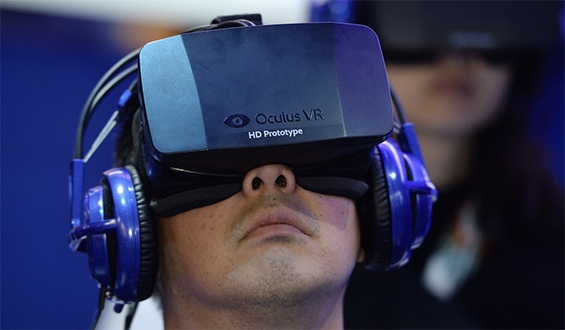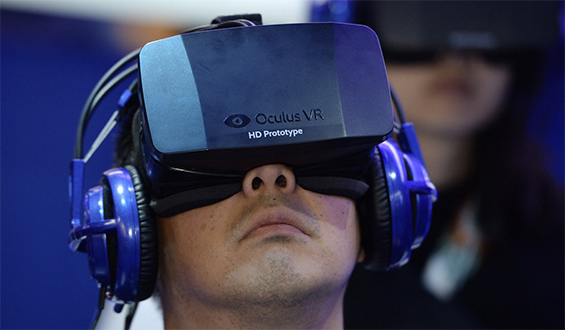
A professor at Penn State is experimenting with how the immersive virtual reality system Oculus Rift and related technologies can be used to improve online learning.
Assistant professor of engineering design and industrial engineering Conrad Tucker and his students have been designing virtual reality technology with the goal of using it for distance learning that is more effective by introducing a tactile element that previously could only be achieved in an in-person classroom.
Their study has found that it’s working. Using the Oculus Rift goggles and a haptic glove, which allows users to interact with the world as if they were really using their hands, improves student performance compared to a traditional flat screen and traditional keyboard and mouse controls.
54 undergraduate engineering students were given the task of assembling a virtual coffee pot from disparate pieces. Half did this with the virtual reality technology, and the rest used a simple computer program. The median time for the virtual reality group was 23.21 seconds, but those using a keyboard and mouse took a median of 49.04 seconds — more than double the time.
Katie Jacobs of Penn State News quoted Tucker:
Online learning gives us huge opportunities in higher education. You can connect with more diverse people across greater distances, for example. But online courses also limit you in some ways– there’s little immersive or tactile interaction, and sometimes it’s hard for students to engage with the material. IVR systems are a potential solution to that problem.
Immersive virtual reality systems like the Oculus Rift have many benefits. But one of the major ones is that when compared to the non-immersive system, IVR systems give you a much more natural experience. It’s like you’re actually there.
Moving forward, we’d love to work with students in other countries. Oculus Rift and other similar technologies allow you to sync your devices with others regardless of location and work on the same project. You can always Skype with people around the world, but you don’t get the same experience. This technology would allow you to collaborate with others all over the world.
Everything except the headset is made by students — the haptic glove, the classroom and coffee pot, and another simulation that is a giant game of Jenga. They used the software Unity3D for the simulations, writes Leila Meyer of Campus Technology.
Bryan Dickens, a senior majoring in computer engineering, said:
You know that you’re not really in this new place, but in some ways you are. You can look around and see things that seem real. You’re moving yourself through a different world, and that’s what the virtual reality device is aiming for.
The project was funded by a Research Initiation Grant from the Center for Online Innovation in Learning, according to Katie Jacobs writing for Phys.org. Their paper will be published in the ASME 2015 International Design Engineering Technical Conferences & Computers and Information in Engineering Conference.




